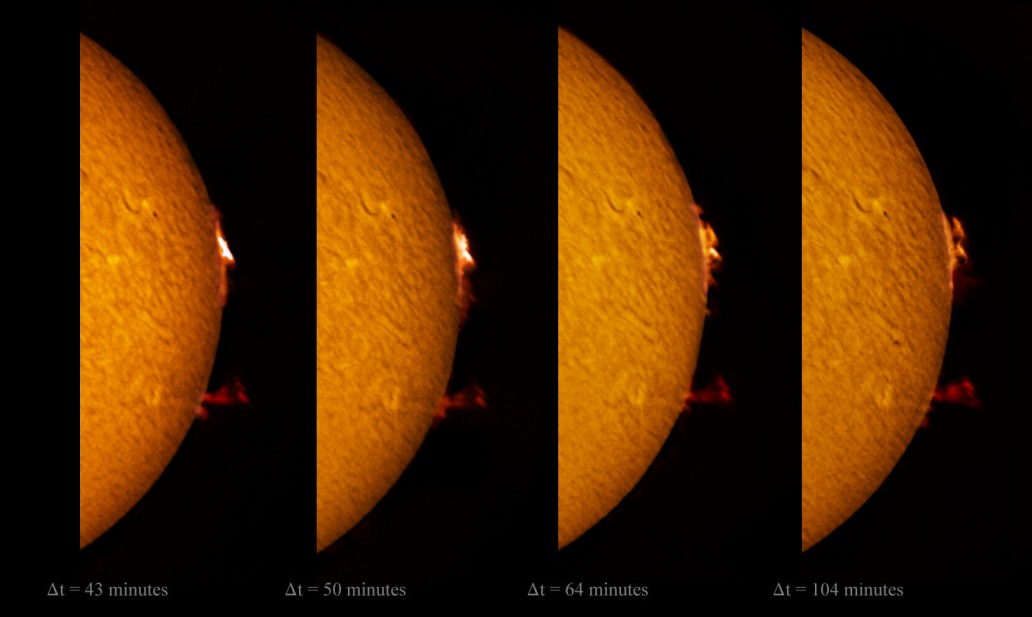
Conditions: taken Nov. 4, 2003 from Boulder, CO; medium/low transparency, partly cloudy, gusty wind, bad seeing.
Setup: Coronado SM60/BF10 H-alpha filter, Borg 100ED F6.4, ST10XE, MaximDL/CCD, Takahashi EM-10 mount (here's how this setup looks). In order to avoid saturation of the CCD I had to use a 645/10 nm continuum filter on the BF10.
Exposure time: 350 ms
Processing: Mira6, AIP4WIN, Photoshop. If you're interested, here's a link to a description of the method I developed.
On Nov. 4, 2003 at 19.29 UT the largest solar flare ever recorded erupted from active region 10486 at the solar limb. The flare lasted for ~37 minutes and gave rise to a coronal mass ejection (CME) moving at the extreme velocity of 2300 km/second. The images here start a few minutes after the flare had ended and show the initial evolution of the CME. On the first frame the CME peak H-alpha flux was twice that of the photosphere!
I took an image every three minutes for 75 minutes, until the sun passed behind some branches. Due to clouds, however, only about one in five of the images could be used. Even some of these were affected by weak clouds which I had to remove by elaborate processing, a link to which is given above.
The images above are shown at 70% of full resolution. I also have a full disc sequence, check it out!
Here's my main page where you can see more of the pictures I have taken so far.
Comments greatly appreciated! (mikael@leif.org)